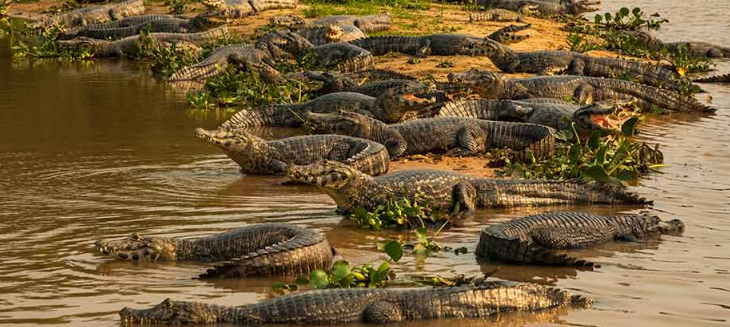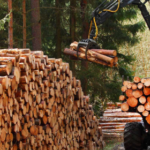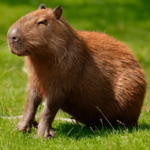Introduction to the Pantanal Wetlands
The Pantanal Wetlands Crocodiles, one of the world’s largest tropical wetlands, is a treasure trove of biodiversity. Spanning across Brazil, Bolivia, and Paraguay, this vast ecosystem teems with life—from colorful birds to elusive jaguars. Yet perhaps the most fascinating inhabitants of these marshy landscapes are the crocodiles. These ancient reptiles glide silently through the waters and bask on sun-soaked banks, embodying an aura of mystery that captivates both scientists and nature enthusiasts alike.
As we delve into the unique world of Pantanal wetlands crocodiles, prepare to uncover their secrets—their adaptations for survival in this diverse habitat, the challenges they face from human activities, and how conservation efforts aim to protect them. Join us on this journey through one of nature’s most intriguing ecosystems!
The Different Species of Crocodiles in the Pantanal
The Pantanal Wetlands are home to a fascinating variety of crocodiles, each uniquely adapted to this rich ecosystem. The most prominent species found here is the broad-snouted caiman. This robust reptile thrives in both freshwater and brackish habitats.
Another notable inhabitant is the spectacled caiman, known for its distinctive eye ridges that resemble spectacles. These agile predators play a vital role in controlling fish populations within lagoons and rivers.
Lesser-known yet equally intriguing is the Yacare caiman, often spotted basking under the sun. Its striking appearance adds to the vibrant tapestry of wildlife in this biodiverse region.
While these species might seem similar at first glance, subtle differences set them apart. Observing their behaviors reveals a complex social structure among these remarkable reptiles that contributes significantly to maintaining ecological balance in the wetlands.
Adaptations and Characteristics of Pantanal Crocodiles
Pantanal crocodiles are remarkable creatures, perfectly adapted to their wetland habitat. Their elongated bodies and powerful tails allow them to glide effortlessly through water. These features make them efficient hunters in murky environments.
Their skin is another marvel. It’s tough and scaly, providing protection from predators while also helping regulate body temperature. The coloration varies from dark green to brown, offering excellent camouflage among the reeds and shadows of the Pantanal.
These reptiles have keen senses too; their eyes can spot movement even in low light conditions. With a unique valve system in their throats, they can remain submerged with just their nostrils above water for extended periods—ideal for ambushing prey.
Moreover, Pantanal crocodiles are opportunistic feeders, consuming fish, birds, and small mammals that venture too close to the water’s edge. This adaptability plays a crucial role in maintaining balance within this vibrant ecosystem.
Threats to Crocodile Populations in the Pantanal
The Pantanal wetlands, a haven for diverse wildlife, face significant threats that impact crocodile populations. Habitat destruction is one of the most pressing issues. As agriculture expands and urban areas encroach, these reptiles lose their natural spaces.
Pollution is another critical concern. Agricultural runoff and industrial waste seep into rivers and lakes, altering water quality. Crocodiles are particularly sensitive to toxins in their environment.
Additionally, illegal hunting poses a severe risk. Despite regulations aimed at protecting them, poaching continues to threaten the survival of certain species.
Climate change also plays a role in this delicate ecosystem’s balance. Rising temperatures and erratic rainfall patterns can disrupt breeding cycles and food availability for crocodiles.
All these factors create an increasingly precarious existence for Pantanal wetlands crocodiles as they navigate their shrinking world.
Conservation Efforts and Success Stories
In the Pantanal, dedicated organizations work tirelessly to protect crocodile populations. Conservation initiatives focus on habitat restoration and legal protections for these vital species. Community involvement is crucial in these efforts.
Awareness programs educate locals about the ecological importance of crocodiles. By fostering a sense of ownership, communities become stewards of their natural surroundings. Local fishermen now report healthier ecosystems due to reduced hunting pressures.
Success stories abound from various projects across the wetlands. One notable example involves breeding programs that have increased population numbers significantly over recent years. These initiatives not only help restore balance but also empower local communities economically through sustainable practices.
Ecotourism plays an essential role too, attracting nature enthusiasts eager to witness Pantanal wetlands crocodiles in their natural habitats while providing critical funding for conservation projects. This symbiotic relationship helps ensure a brighter future for both wildlife and people alike.
Ecotourism and Crocodile Watching in the Pantanal
The Pantanal is a paradise for ecotourism, attracting nature lovers and adventure seekers alike. Crocodile watching stands out as one of the most thrilling activities in this biodiverse region.
Visitors can embark on guided boat tours or canoe trips to observe these magnificent reptiles in their natural habitat. The calm waters provide an excellent vantage point, allowing travelers to see crocodiles basking on riverbanks or gliding through murky waters.
Photographers find endless opportunities here. The stunning contrasts between lush greenery and the scaled bodies of crocodiles create captivating images.
Local guides enrich the experience with stories about wildlife behavior and conservation efforts. Their knowledge enhances appreciation for these ancient creatures while fostering respect for their environment.
Responsible tourism practices are encouraged, ensuring that interactions remain non-intrusive. This way, both tourists and crocodiles benefit from sustainable exploration of this unique ecosystem.
Conclusion:
The Pantanal wetlands are a treasure trove of biodiversity, and the crocodiles that inhabit this unique ecosystem play an essential role within it. These remarkable reptiles not only captivate wildlife enthusiasts but also serve as indicators of environmental health.
Protecting their habitat is crucial for sustaining their populations. With ongoing conservation efforts and success stories, there’s hope for the future of these ancient creatures. Ecotourism continues to shine a light on the beauty and importance of Pantanal wetlands crocodiles, encouraging more people to appreciate these magnificent animals in their natural habitat.
As we delve deeper into understanding their lives, we uncover new layers of appreciation for the intricate web of life that thrives in one of Earth’s most extraordinary regions. The journey into the heart of the Pantanal reveals not just its crocodiles but also our responsibility to ensure they remain part of this vibrant ecosystem for generations to come.


